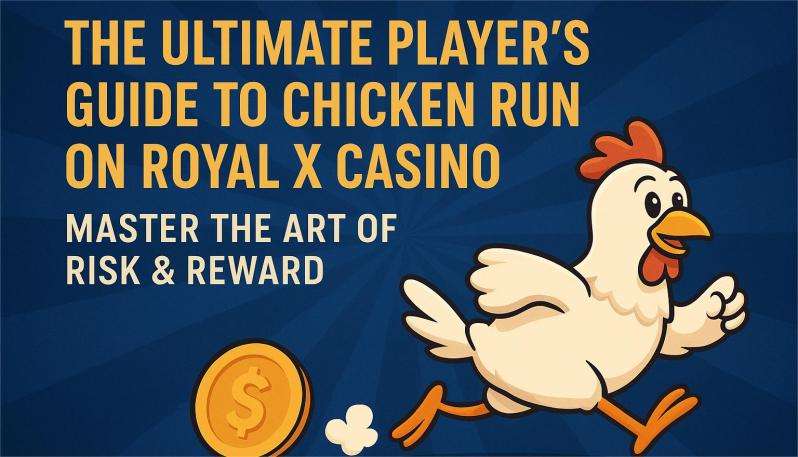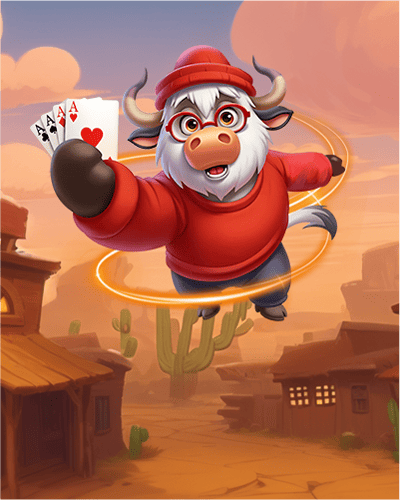The Ultimate Player's Guide to Chicken Run on Royal x Casino: Master the Art of Risk & Reward
Oct 8, 2025
More Than Just a Poultry Pursuit
In the dynamic world of online casino gaming, where innovation often takes a backseat to familiar formulas, a remarkable title has managed to carve out its own unique niche. Chicken Run, the latest sensation to land on the Royal x Casino, represents a fascinating evolution in crash-style gaming that blends simple mechanics with profound strategic depth. For those weary of mindlessly pulling lever slots or navigating the complex etiquette of virtual table games, this game offers a refreshing alternative that rewards calculation, courage, and timely decision-making above all else.
At first glance, the premise might seem almost laughably simple—guide a chicken across an increasingly hazardous path to multiply your winnings. But beneath its lighthearted exterior and charming animations lies a sophisticated risk-management simulator that has captivated a growing community of strategic gamers. The game transforms the age-old question of "when to hold 'em and when to fold 'em" into an engaging interactive experience where every decision carries tangible weight and consequences.

This comprehensive guide will take you beyond the basic mechanics and into the nuanced strategies that separate occasional players from consistent performers. Whether you're a newcomer curious about the buzz or a seasoned player looking to refine your approach, the following pages will provide you with the knowledge, frameworks, and insights needed to navigate Chicken Run's perilous path with greater confidence and competence.
Part 1: Understanding the Chicken Run Phenomenon
The Basic Premise and Gameplay Loop
Chicken Run presents players with a deceptively straightforward challenge: guide a courageous chicken character along a path filled with increasing danger to multiply an initial wager. The game falls squarely within the crash-style gaming genre but distinguishes itself through its charming thematic presentation and nuanced mechanical execution. Each round begins with players placing a bet and watching as their chicken embarks on a journey where potential rewards increase with every successfully navigated obstacle .
The core gameplay loop follows this essential pattern:
- Place your initial wager before the round begins
- Watch your chicken proceed along the hazardous path
- Decide when to cash out as the multiplier increases
- Bank your winnings or lose your stake if caught in a hazard
This elegant simplicity belies a deeper psychological tension that makes Chicken Run so compelling. Unlike passive games of chance where outcomes are determined entirely by random number generators, Chicken Run places the agency directly in players' hands. The timing of your cash-out decision becomes the primary determinant of success or failure, creating a thrilling test of nerve and judgment with every round .
Visual Appeal and Thematic Elements
Chicken Run succeeds not only through its engaging mechanics but also through its delightful presentation. The game features vibrant, cartoon-style graphics that maintain a lighthearted atmosphere despite the escalating tension. The protagonist chicken character exhibits personality through amusing animations, while the environments—though filled with danger—remain visually appealing with their bright color palettes and whimsical design elements .
These aesthetic choices create an interesting cognitive dissonance that enhances the overall experience. The cheerful exterior contrasts with the very real stakes at play, much like the charming facade of a carnival game masks the seriousness of competition. This balance makes the game accessible to casual players while maintaining the gravity that serious gamblers expect from a legitimate casino offering.
Part 2: Gameplay Basics - Understanding the Mechanics
Core Rules and Objectives
Before delving into advanced strategy, it's essential to understand Chicken Run's fundamental rules. The objective is simple: maximize winnings by cashing out at the right moment before your chicken encounters a hazard. Players begin each round by placing a bet within their chosen limits. Once the round commences, a multiplier begins to increase from 1x upward, representing the potential payout for that round .
The critical decision point comes at every moment during the round—do you cash out now and secure your current winnings, or do you continue risking your entire stake for a potentially higher reward? This tension between greed and caution forms the emotional core of the experience. If you fail to cash out before a randomly determined hazard point, you lose your entire stake for that round. There are no partial losses or second chances—once the hazard triggers, the opportunity has passed .
Betting Structure and Payout System
Chicken Run employs a straightforward betting system that accommodates various bankroll sizes. Players can typically select their wager amount within a predefined range, making the game accessible to both conservative and high-stakes players. The potential payout is calculated by multiplying the initial wager by the current multiplier at the time of cash-out. For example, a $10 bet cashed out at a 3.5x multiplier would yield $35 in total ($25 in profit) .
The game's theoretical Return to Player (RTP) stands at 98%, which is notably higher than many traditional slot machines and casino games . This percentage represents the long-term expected return across millions of game rounds, though individual sessions can and will deviate significantly from this average. Understanding that a higher RTP doesn't guarantee short-term results is crucial for maintaining perspective during gameplay.
Risk Assessment and the "Fried" Concept
The central risk in Chicken Run comes from the ever-present possibility of getting "fried"—the game's thematic term for encountering a hazard and losing your entire stake for that round . The probability of this occurring increases as the multiplier rises, though the exact algorithm governing these probabilities remains proprietary to the developer. This creates a classic risk-reward scenario where higher potential returns come with correspondingly higher risks .
Understanding this fundamental relationship is the first step toward developing a strategic approach. Each decision to continue represents a calculated gamble, with the odds shifting increasingly against your success as the multiplier climbs. The game essentially presents a series of micro-decisions where you must constantly weigh your current guaranteed payout against the possibility of achieving more—or losing everything.
Part 3: Strategy Guide - Maximizing Your Success
Fundamental Approach for New Players
For those new to Chicken Run, adopting a structured approach is far more effective than relying on intuition or emotion. The psychological pull of waiting for "just one more step" can be overwhelming, which is why establishing clear parameters before each round is essential. Begin with these foundational principles:
- Set conservative cash-out targets initially, perhaps between 2x and 3x multipliers, to build confidence and bankroll gradually.
- Start with smaller wagers as you learn the game's rhythms and develop your personal tolerance for risk.
- Practice emotional discipline by adhering to your predetermined targets rather than making impulsive decisions in the moment.
- Focus on consistent small wins rather than chasing life-changing payouts, especially during the learning phase.
This methodical approach allows newcomers to develop intuition based on experience rather than speculation. By observing how multipliers typically behave across numerous rounds, you'll gradually develop a more nuanced understanding of the game's patterns and probabilities .
Difficulty Levels and Their Strategic Implications
Chicken Run offers multiple difficulty levels that significantly impact the risk profile and strategic considerations. While the specific implementation may vary, these typically range from easier modes with gentler early progression to harder modes that offer steeper multiplier climbs but with correspondingly higher risk .
Table: Chicken Run Difficulty Levels and Characteristics
| Difficulty Level | Risk Profile | Multiplier Growth | Recommended Strategy |
|---|---|---|---|
| Easy | Lower early risk | Gradual | Extended play, higher targets |
| Medium | Moderate risk | Balanced | Balanced approach |
| Hard | Higher early risk | Steeper | Aggressive early cash-outs |
| Hardcore | Highest risk | Most aggressive | Precise, disciplined targeting |
Understanding these difficulty settings allows you to align the game's risk profile with your personal tolerance and strategic preferences. Easier modes may appeal to players with patience and smaller bankrolls, while harder difficulties might attract those seeking adrenaline and rapid multiplier growth .
Advanced Strategic Frameworks
Once you've mastered the basics, more sophisticated approaches can help optimize your long-term performance:
- The Two-Step Testing Method: Begin each session with two cautious steps to "test the waters" of the current game rhythm before committing to more aggressive play .
- Predefined Exit Points: Establish specific cash-out windows (e.g., between steps 3 and 4) before each round begins and adhere to them regardless of emotional impulses .
- Step Limitation: Set a maximum number of steps you'll attempt, even during apparently "hot" streaks, to protect yourself from catastrophic losses .
- Difficulty Rotation: Intentionally switch between difficulty levels based on recent performance rather than remaining static in your approach.
These frameworks share a common principle: replacing emotional decision-making with predetermined rules. The greatest danger in Chicken Run isn't the random occurrence of hazards—it's the psychological tendency to abandon good strategy in pursuit of just a little more. By systematizing your approach, you create buffers against these natural but costly impulses.
Part 4: Advanced Techniques and Bankroll Management
Progressive Betting Strategies
While no betting system can overcome the game's inherent probabilities, structured approaches can help manage risk and potentially capitalize on positive trends. Consider these established methods:
- Flat Betting: Maintaining a consistent wager amount regardless of wins or losses. This conservative approach minimizes risk and helps extend playing sessions.
- The 1-3-2-6 System: A positive progression where you increase bets following wins according to this sequence, then reset after a loss or completed cycle. This method aims to capitalize on winning streaks while limiting losses.
- The Anti-Martingale: Doubling your bet after wins and returning to baseline after losses. This approach seeks to maximize profitable runs while containing losses.
Each system has distinct advantages and limitations. Flat betting offers the most stability, while progression strategies can potentially amplify winning sessions but with higher volatility. The key is selecting an approach that aligns with your risk tolerance and sticking with it consistently rather than switching methods mid-session.
Bankroll Management Fundamentals
Proper bankroll management represents the most crucial element of long-term success in any gambling activity, and Chicken Run is no exception. These fundamental principles can help ensure sustainability:
- Establish Session Limits: Determine the maximum amount you're willing to risk in a single session before beginning and never exceed this threshold.
- Use the 5% Rule: Limit individual bets to no more than 5% of your total session bankroll to withstand normal volatility.
- Set Win Goals: Determine a target profit amount at which you'll conclude your session, typically 20-30% of your starting bankroll.
- Implement Loss Limits: Decide in advance the maximum loss you'll accept before walking away, usually 50% of your session bankroll.
These guidelines create essential boundaries that protect you from emotional decision-making during both winning and losing streaks. By focusing on preservation during downswings and capitalization during upswings, you position yourself for long-term success regardless of short-term variance.
Reading Game Patterns and Avoiding Fallacies
While Chicken Run outcomes are ultimately determined by random number generation, many players find value in tracking patterns and probabilities. However, it's crucial to distinguish between meaningful observation and cognitive fallacies:
- Meaningful: Noting that the probability of success decreases as the multiplier increases—a mathematical certainty.
- Fallacy: Believing that a "due" outcome exists after a series of similar results.
The most dangerous misconception is the gambler's fallacy—the belief that past events influence future probabilities in truly random processes. If the game has produced several early hazards consecutively, the probability of the next round ending early remains unchanged. Each round represents an independent event, and recognizing this fundamental truth is essential for maintaining perspective.
Part 5: Chicken Run in Context - Platform and Developer
The Royal x Casino Experience
Chicken Run arrives on Royal x Casino as part of the platform's expansion into innovative gaming formats beyond traditional slots and table games. The integration typically offers seamless gameplay with crisp visuals and responsive controls optimized for both desktop and mobile environments. Players can expect the standard Royal x Casino features, including secure transaction processing, accountable gaming tools, and customer support resources.
The platform may offer unique promotions or tournaments centered around Chicken Run, creating competitive opportunities beyond standard solo play. These special events can provide additional value through prize pools, leaderboard competitions, or enhanced payout structures, though always review the specific terms and conditions before participation.
InOut Games: The Developer Behind the Experience
Chicken Run comes from InOut Games, a licensed B2B provider specializing in high-quality gaming solutions for online casinos . With a diverse portfolio of 34 games, the company has established a reputation for creating engaging player experiences that balance entertainment with commercial viability for operators .
The developer has described Chicken Run as embodying their design philosophy of combining "simplicity, thrill, and universal appeal" . This approach prioritizes accessible mechanics with underlying depth—a combination that has proven effective at attracting and retaining players across different demographics and experience levels.
The studio has further expanded the chicken-themed universe with the recent release of Chicken Royal, their first slot machine offering inspired by the same thematic elements . This expansion demonstrates their commitment to building recognizable brands across multiple gaming formats, potentially creating crossover opportunities for enthusiasts of either title.
Part 6: Mobile Gameplay and Cross-Compatibility
Optimized for On-the-Go Play
The mobile implementation of Chicken Run on Royal x Casino typically delivers a polished experience that maintains the core gameplay while adapting controls for touch interfaces. The essential cash-out mechanic translates effectively to tap-based inputs, allowing for quick reactions when timely decisions are required. Visual elements are usually optimized for smaller screens without sacrificing clarity or performance.
This mobile accessibility makes Chicken Run well-suited for shorter sessions during spare moments, though the same strategic discipline applies regardless of platform. If anything, the potentially more distracting environment of mobile play makes predetermined rules and limits even more crucial for maintaining sound decision-making.
Technical Performance and Reliability
A game like Chicken Run depends on precise timing and responsive controls to function correctly, making technical performance a significant consideration. Based on typical implementations, players can expect:
- Rapid round initiation with minimal loading times between sessions
- Smooth multiplier animation that provides clear visual feedback
- Immediate cash-out processing when decisions are made
- Consistent visual and audio cues that enhance the experience without interfering with gameplay
These technical elements contribute significantly to the overall player experience. Laggy responsiveness or visual stuttering could negatively impact the timing-critical decisions that define gameplay, making the Royal x Casino's reliability an important component of enjoyment and fairness.
Part 7: Final Verdict - Who Should Play Chicken Run?
Ideal Player Profiles
Chicken Run particularly shines for certain player types:
- Strategic Thinkers: Players who enjoy calculating odds and implementing systematic approaches rather than relying purely on chance.
- Players Seeking Control: Those who prefer games where decisions directly impact outcomes rather than passive waiting for results.
- Bankroll Managers: Disciplined players who understand the importance of loss limits and profit targets.
- Variety Seekers: Casino enthusiasts looking for engaging alternatives to traditional slots or table games.
The game's unique combination of simple presentation and strategic depth creates a distinctive niche that appeals to both casual and serious gaming audiences.
Potential Limitations
Despite its many strengths, Chicken Run might not perfectly suit every player:
- High-Roller Pursuits: Those seeking massive jackpot potential might find the game's capped multipliers limiting.
- Passive Players: Individuals who prefer completely relaxed, low-attention gaming might find the constant decision-making demanding.
- Impulse Control Challenges: Players who struggle with predetermined limits may find the temptation to chase losses or push luck too far particularly punishing.
Understanding these potential mismatches can help manage expectations and ensure players select games aligned with their preferences and tendencies.
Crossing the Road to Success
Chicken Run on Royal x Casino represents a compelling evolution in crash-style gaming that masterfully blends accessible mechanics with genuine strategic depth. Its charming presentation belies a sophisticated risk-management challenge that rewards discipline, planning, and emotional control above all else. The game stands as a testament to the potential for innovation within the casino space when developers prioritize engaging gameplay alongside traditional gambling elements.
The true brilliance of Chicken Run lies in its psychological transparency—it never disguises its nature as a test of judgment rather than merely luck. Each round presents a clear series of conscious choices where you alone determine the balance between caution and ambition. This agency creates a more personally accountable experience where successes feel earned and losses carry instructive value.
As with any casino offering, responsible participation remains paramount. The game's engaging nature can potentially lead to extended sessions, making disciplined bankroll management and time limits essential companions to the strategies discussed here. When approached with the right framework and perspective, Chicken Run offers not just potential profit but genuine mental stimulation—a rare combination in the gaming landscape.
Ultimately, mastering Chicken Run has less to do with understanding the chicken's path than with understanding your own relationship with risk. The game holds up a mirror to our decision-making processes, revealing both our calculated wisdom and our greedy impulses with equal clarity. By embracing its challenges with structure and self-awareness, you transform a simple game about poultry into a meaningful exercise in judgment—one that might just teach you something about navigating risk far beyond the digital farmyard.











